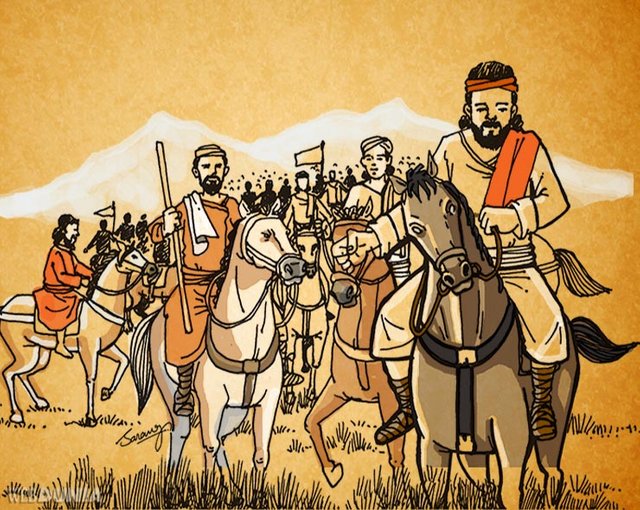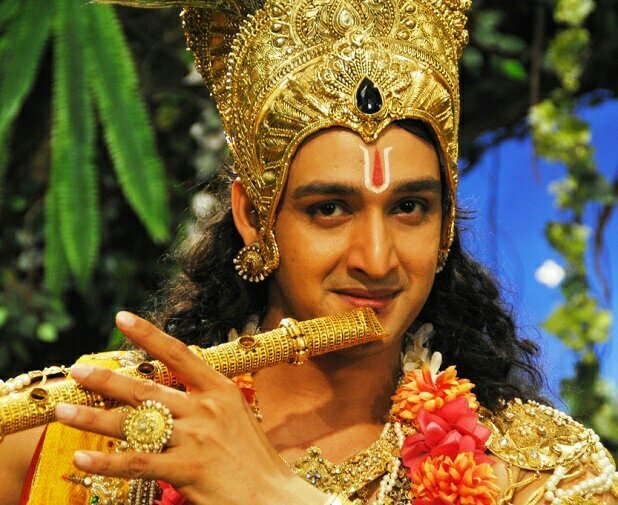These six wars of ancient India were replaced by the history of the world

There were several wars in ancient India, but there were six wars that took the whole earth into grip. If seen, this war is still recorded in some other form of world culture and religion in some form. So today we know that those six major wars of ancient India.
(1) Indra and Vrattasur war: In the field of Jambudvip, there was a battle of dewas for 12 times. Last time, the war of Indra was fought with King Bali, son of Prachalad, son of Hiranyakashipu, and the Deity was defeated, then the Jupiter was ruled by the Asurans. The place between the Jambudvipa was in Elkhart state. The result of the Devasar Sangras was that the asuras and tunes gave rise to different cultures and religions on earth and divided the earth among themselves. In these conflicts, the deity has always been proved weak and the powerful powerful.
It is a matter of Satyuga when a monster named Kalkeya had a panic over the whole earth. He lived under the throats. Troubled by both of them, it was now necessary for all the gods to assemble together the thought of Khrittrasura. For the slaughter of this storytare, he created a weapon with the bones of the Dadhichi, which was named Vajra. The Vrittasura was a powerful force, which had attacked and attacked the cities of Aryans in his nose. In the end, Indra took the morcha and there was a fierce battle against him, in which the Khrtsrasur was killed. Due to this brave work of Indra, his joy and praise began to be started around him.
Researchers believe that the original name of Vrittrasur was only the name, which was possibly the ruler of Assyria. It is mentioned in Parsis' Avesta also. The Vritti attacked the Aryans, and to defeat them, he worshiped a goddess named Adavishur. This war of Indra and Vratsarasur had a profound effect on all cultures and civilizations. Only then does the Troy war of Homer's Iliad and the stories of the gods of Greece and Greece of Apollo are similar. This shows how the Influence of Indra-Sikh war in the world has had a widespread impact.

(2) Hehay-Parasuram War: hundreds of years before the birth of Lord Rama, the people of the Ahai dynasty fought with Parashuram. This was the third largest battle of India's known history. Jamadagni Parashurama is believed to be born after Vishvamitra, one or two generations later. This time it has been known in ancient Sanskrit texts as 'Aartadhash Yatra'.
In this era, where there was a conflict between Vashishta and Vishwamitra in the north, there was a situation of war between the deceased and the Bhargava in the West. In Ayodhya, Satishvrat, a king named Trishank was the most powerful king, on the other hand, Dartubhini of Kartaviri was ringing in Anarta (Gujarat).
It is believed that this war against the Hai Dynasty of Anrata (Gujarat) under the leadership of Parasurama was fought at the end of Satyuga, Parasuram defeated the hypocrites one after the other 21 times in this Mahasanghara from the Hissons. Parshuram was from Bhrigugas and traditionally used to live on the side of Narmada (Naimishanaya). It is important to tell you that Parshurama who was the second in Ram's time was second and the Parshuram in the Mahabharata period was the third.
(3) Ram-Ravan War: Ram was the son of King Dasharath of Ayodhya, then Ravana was the king of Lanka. 7,128 years have passed since Ram was born. Ram was a historical person and there is enough proof of it. Ram was born before 5,114 AD. The battle of Ram and Ravan was done before 5076 BC i.e. 7090 years ago. Then Lord Ram was 38 years old. This war lasted 72 days. The prints of Ram and Ravana war can be seen throughout the countries and cities of South Asia. In Malaysia, Indonesia, Sri Lanka, Thailand, Vietnam and Lagos, this can be clearly seen.

(4) Dasaraj War: The war of Dashragya happened between the Aryans in the Aryavarta region of India. The ten-state war was fought at the end of Tretayug. It is believed that this war was fought 150 years after the Ram-Ravan War. However, there is a difference between the time. The description of this war exists today in every country and culture of the world. This is called the Battle of Ten King. This war is described in the seventh division of the Rig Veda. According to historians, this war took place around 5200 BC near the Purnishini river (Ravi river) in modern Punjab of Punjab. That is, this war was fought before the war of Ram and Ravan.
In this war, on one hand there were warriors of the Arya community named Puru and on one hand, the warriors of Tartusu community were fighting the war. Both belonged to the community called 'Bharat' of Hind-Aryans. Although some of the leadership of the nobles was considered absurd. King Sudas led the Tutsu community. Sudas was the son of Devodas, who himself was the son of Shrinjoy. His father's name was Debabrata. Advisor in the war of Sudas was the sage Vashishta. Against Sudas, ten kings were fighting for war, whose leadership was converting the kings of Puru Khabile. Whose military adviser was Rishi Vishwamitra. This fight was also the battle of power and ideology.
Sudhas, the well-known hero of Rig Veda was the leader of India and Purohit Vashishth was his assistant. They had enemies, five principal tribes-, Anu, Druhuyu, Yadu, Turvashas and Puru and five minor tribes- ten kings of Alin, Pakht, Bhalans, Shiva and Vishnin. The founder of the anti-faction was Rishi Vishwamitra and his leadership was led by the men. In the Rig Veda, Dasraj war has been described as an unfortunate event. In this battle, Vishwamitra's army had to face defeat in the hands of the combined army of Indra and Vashishta.

(5) Mahabharata war: In the Kurukshetra between the Pandavas and the Kauravas, the Mahabharata war took place 5000 years ago. In this battle that lasted for 18 days, Lord Krishna gave the message of Geeta to Arjuna. Krishna was born in 3112 BC (i.e. 5121 years ago today). The war of Mahabharata took place on 22 November 3067 BC. Lord Krishna was 55-56 years old at that time. The most terrible consequence of this war happened. Religion and culture were almost destroyed Millions of people were killed, in the same way millions of women became widows and as much orphans.
(6) Sikandar and Porus war: There were two small states around the state of Poros, Takshshila and Ambisar. Takshshila, where the king was Amli and the state of Ambeesar was spread all over Kashmir. Amli was hated by Purusa, so she joined hands with Alexander. Ambisar remained secluded and eased the way for Alexander. On the other hand Dhananand's state was also neutral.
Before Porus, Alexander had to face defeat in the war. Poros son Viragati received the second war from Poros. Then there was a third war with Poros, in which Sikander had to face defeat. So he prayed to the man to stop the war. After this the treaty was signed. Ultimately recorded in history is only the talk of war in which Purus (Poras) was defeated. It clearly shows that Alexander did not win any single state of India. Yet he is considered great, while Chandragupta Maurya defeated his commander, Cellukas, and took hostage.

Reference:
- Rig Veda, Mahabharata and Puranas
- The book Indian Archeology and Prehistoric Cultures, author Dr. Shivsena Sahay.
- Book Vishwamitra, writer Brijesh's Burman
Thanks everyone
Excellent article and very well structured my regards and greetings you have my vote.